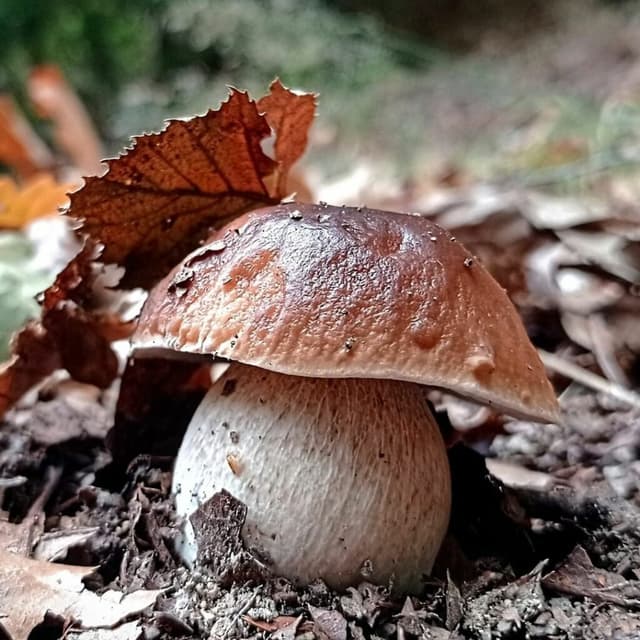Page 1 of 4

Cep
The most colorful representative of the mushroom kingdom. According to some sources, it earned its name because its flesh remains marbled white even after cooking. Cep (Boletus edulis) is a type of edible mushroom that is highly prized for its flavour and culinary uses. It is also known by various other names, including king bolete, penny bun, and porcino mushroom. The term 'cep' is more commonly used in the UK and other European countries, while 'porcini' is the Italian name for the mushroom.

Chanterelle
The chanterelle mushroom has a bright yellow-orange color. That's why these mushrooms can be seen from afar, making them easy to gather. However, in the autumn, they can be easily mistaken for yellow leaves. The Chanterelle mushroom is possibly one of the best eating mushrooms in the world, in my opinion only second to the fresh penny bun otherwise known as a cep. But it does have a close look-alike. In this article, we delve into the world of the chanterelle, exploring its unique features, culinary versatility, and differentiation from its lesser-known look-alike, the False Chanterelle.

Fly agaric
The fly agaric - a classic representative of its kind, it is this mushroom that is meant when the common name is mentioned. Fortunately, the characteristic appearance helps distinguish the fruiting bodies of this mushroom from other dangerous species. The Fly Agaric, scientifically known as Amanita muscaria, is an iconic mushroom, to say the least. It has appeared in fairy-tales, legends, on t-shirts, in artwork, and, of course, video games.

Rough boletus
The rough boletus - edible autumn mushrooms with a quite attractive appearance. You can gather them almost until the snowfall. Rough boletus is widespread in deciduous or mixed forests where there are birch trees. It can also be found in tundra and forest-tundra. It may grow near dwarf birch trees. Since in such cases it can even exceed the height of the plants, the mushroom is jokingly called 'overbirch bolete'